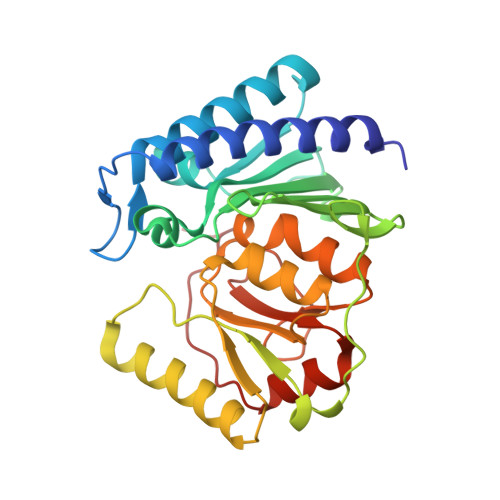Co-crystallization of human inositol monophosphatase with the lithium mimetic L-690,330.
Kraft, L., Roe, S.M., Gill, R., Atack, J.R.(2018) Acta Crystallogr D Struct Biol 74: 973-978
- PubMed: 30289407
- DOI: https://doi.org/10.1107/S2059798318010380
- Primary Citation of Related Structures:
6GIU, 6GJ0 - PubMed Abstract:
Lithium, which is still the gold standard in the treatment of bipolar disorder, has been proposed to inhibit inositol monophosphatase (IMPase) and is hypothesized to exert its therapeutic effects by attenuating phosphatidylinositol (PI) cell signalling. Drug-discovery efforts have focused on small-molecule lithium mimetics that would specifically inhibit IMPase without exhibiting the undesired side effects of lithium. L-690,330 is a potent bisphosphonate substrate-based inhibitor developed by Merck Sharp & Dohme. To aid future structure-based inhibitor design, determination of the exact binding mechanism of L-690,330 to IMPase was of interest. Here, the high-resolution X-ray structure of human IMPase in complex with L690,330 and manganese ions determined at 1.39 Å resolution is reported.
Organizational Affiliation:
Sussex Drug Discovery Centre, University of Sussex, Chichester II, Falmer, Brighton BN1 9QJ, England.

















